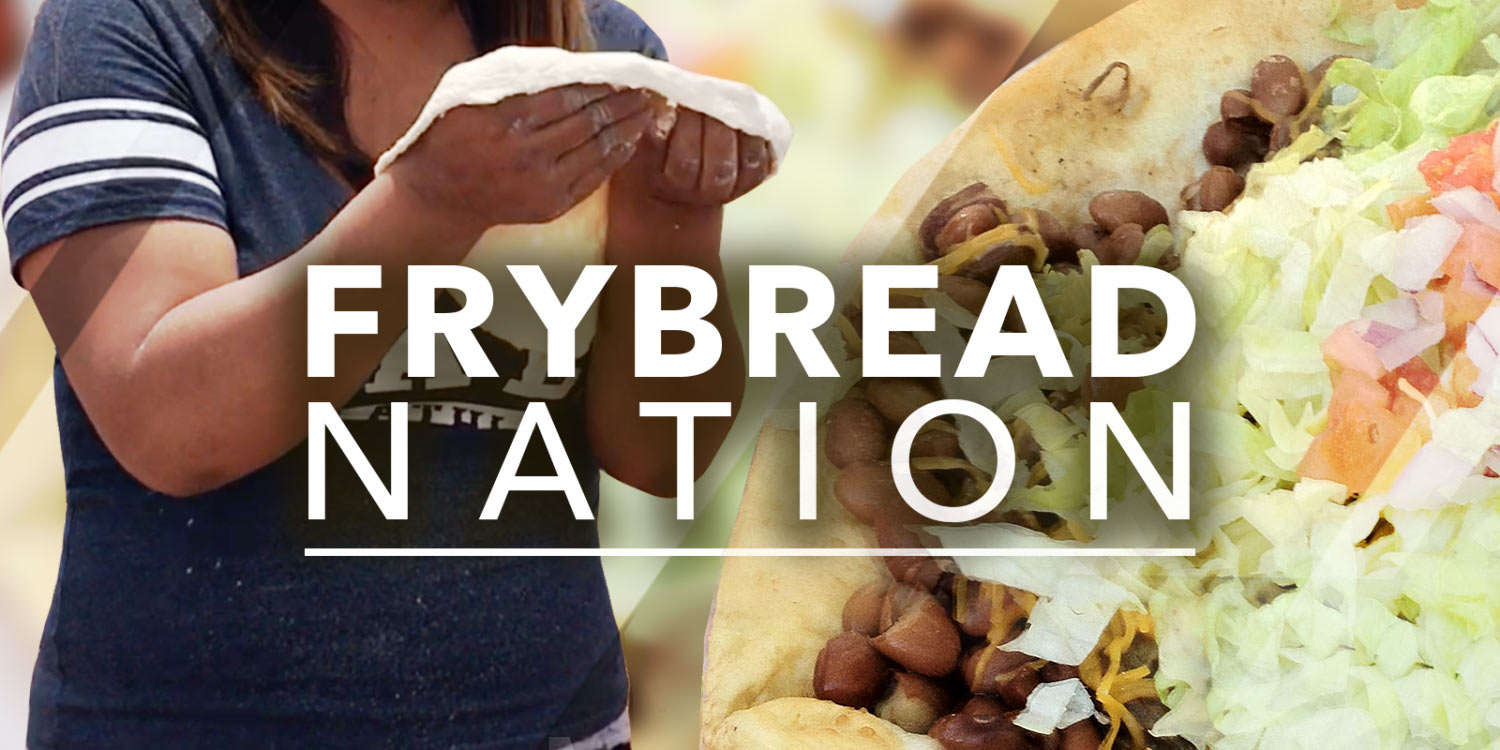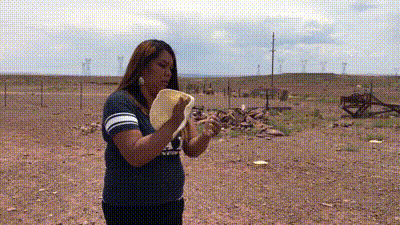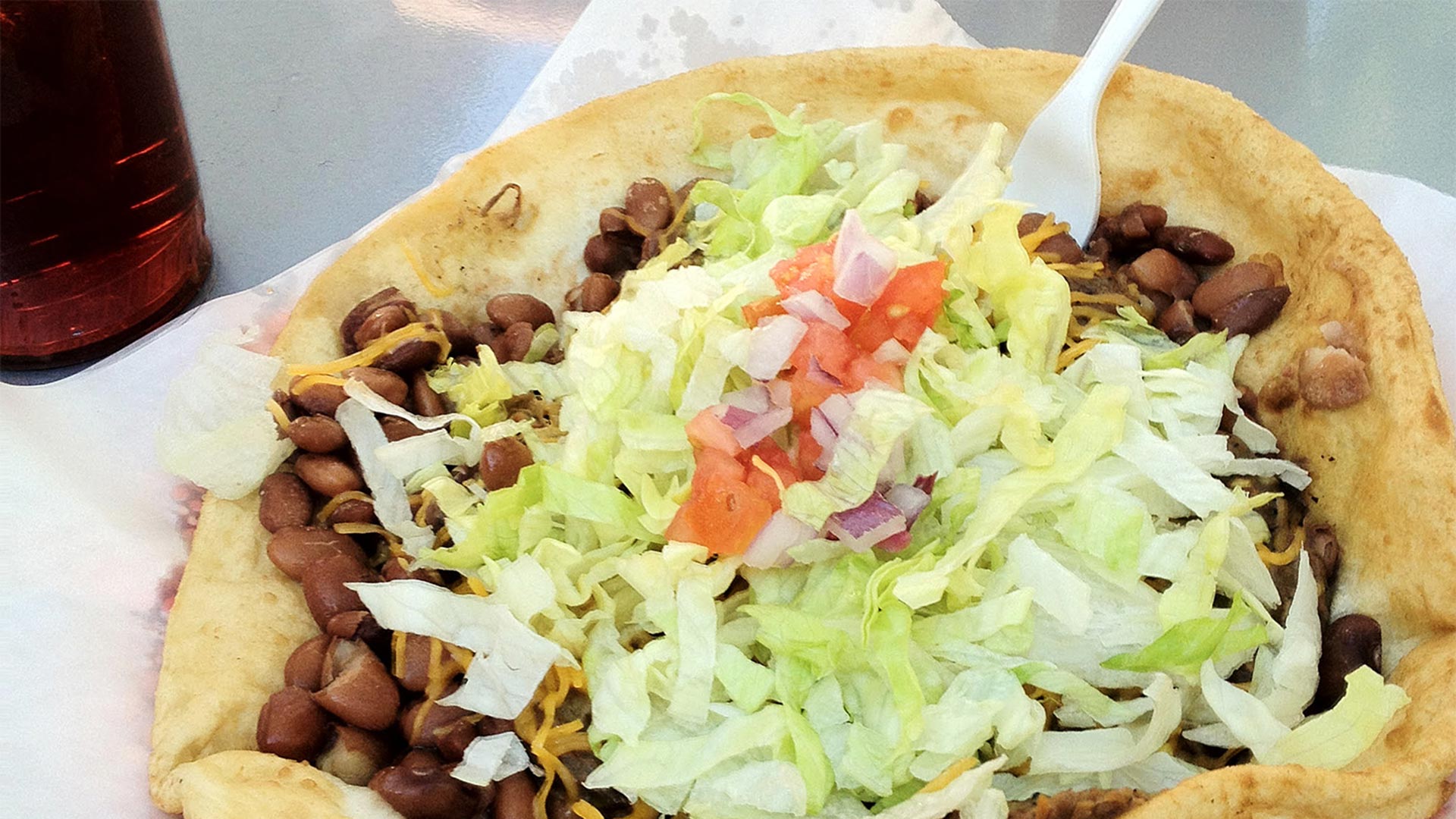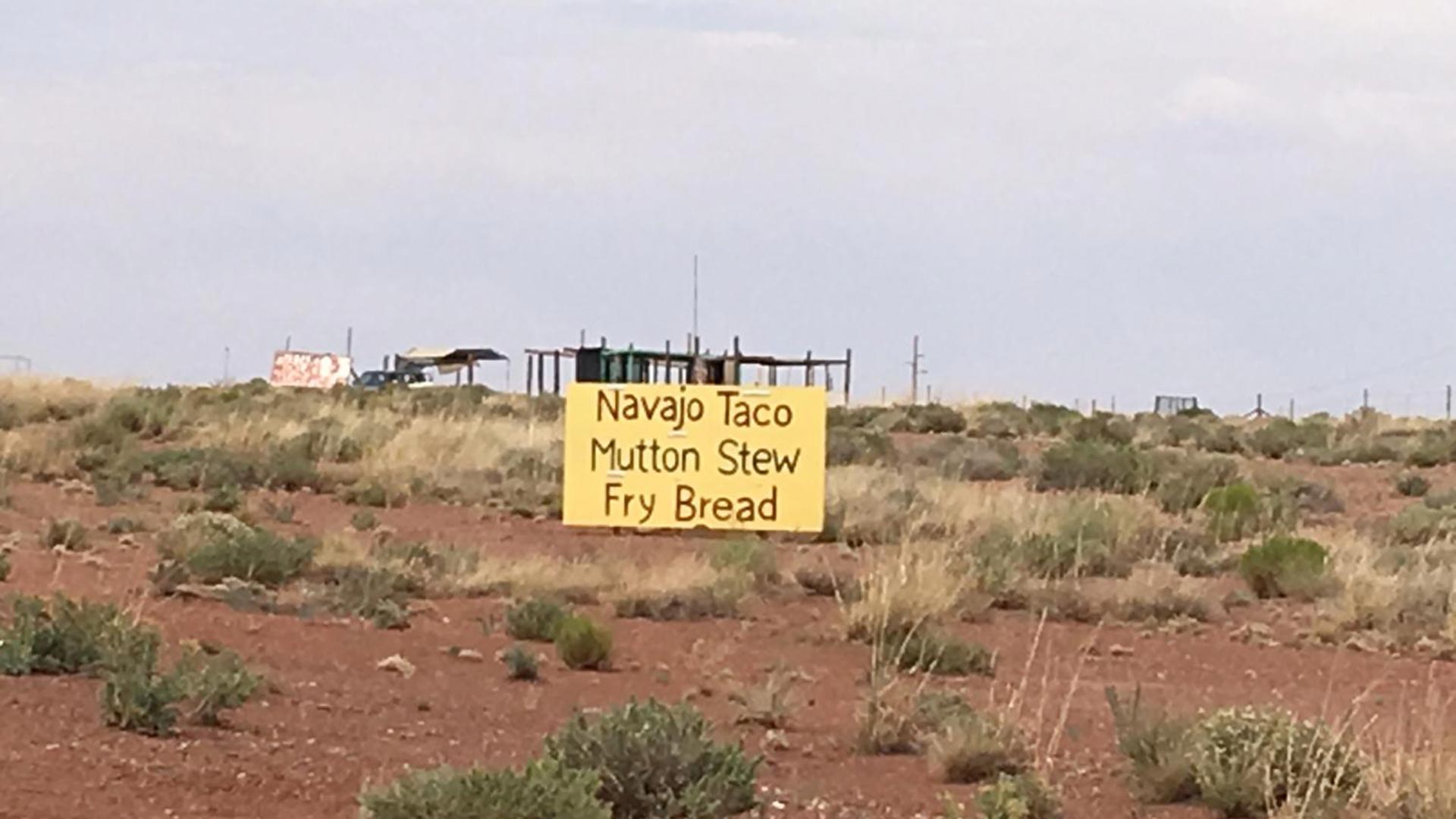 In Fry Bread Nation, Fronteras Desk explores Navajo food staples like mutton, blue corn mush and fry bread. Some are a source of strength while others carry hidden risks.
In Fry Bread Nation, Fronteras Desk explores Navajo food staples like mutton, blue corn mush and fry bread. Some are a source of strength while others carry hidden risks.
Marlena Jones rolls up a ball of white flour, shortening and baking powder, then claps it between her hands until it’s as big as her face. She then stretches it thin and lays it on a pan of bubbling grease. That pan sits over an open fire on a 90-degree day.
Jones is sweating. She’s making fry bread for 40 people at a Cameron church function.
“I used to make it every day because my kids love it,” Jones said. “After I found out that I did have high blood pressure I cut down on the greasy stuff.”

Jones found out she was a candidate for Type 2 diabetes.
“It is scary once you hear it that you have diabetes. But after I cut down everything came out to be normal,” she said. “It was hard to get my blood to where it should be, my sugar level. It scares you because I have eight kids. And I try not to feed them all the greasy stuff.”
Fry bread was born out of tragic necessity. In the 1860s, the U.S. Army forced 10,000 Navajos and Apaches to a prison camp in Fort Sumner, New Mexico, some 300 miles from home in what is today known as the Long Walk. Col. Kit Carson said he was trying to “tame the savages.”
“Navajo people were basically given tin meat, lard, sugar, salt and flour. And that became the staple diet,” said Manley Begay, a Navajo and a professor of Indigenous Studies at Northern Arizona University.
After four years of imprisonment, the federal government let the Navajos return home. But Begay said there wasn’t much to come home to. Their crops and animals had withered and died, so the government supplied the Navajo with rations of tin meat, lard, sugar, salt and flour. Fry bread remained a staple.

“We have a complicated relationship with fry bread,” Begay said. “It’s sort of a symbol of perseverance. We persevered from concentration camps to survival. Then it’s a source of pride, a symbol of pride at powwows and rodeos. People identify with fry bread as me, as native. Then also you have pain because of the high rates of diabetes.”
Fry bread isn't just a metaphor for an old problem. It remains a problem today. It still serves as a staple in Navajo homes.
 VIEW LARGER A common sight on the Navajo Nation, this stand is just south of Cameron.
VIEW LARGER A common sight on the Navajo Nation, this stand is just south of Cameron. One in three Navajo people suffers from diabetes, according to the Indian Health Service. Obesity rates are three times the national average.
The U.S. Department of Agriculture has labeled the entire Navajo Nation a food desert. Two years ago the tribe put a 2 percent tax on junk food and sodas and a 5 percent discount on fresh fruits and vegetables. Incidentally, the ingredients for fry bread aren't affected by the incentive.
“It's a tragic necessity when you don’t have much money. When there's high unemployment rate, and there's social ills, historical trauma issues to deal with. Often that's all you can eat,” Begay said.
Navajo chef Brian Yazzie says the solution is simple — Navajos need to return to their roots before the Long Walk.
“We can look beyond fry bread. We can look beyond that and open their eyes to our ancestral food — squash, beans and corn,” Yazzie said.
Yazzie lives in Minnesota, but when he visits his family on the Navajo Nation he's always offered fry bread.
“I came to terms where it's OK to deny it and say, 'Thank you but no,'” he said. Sometimes he gets flack for refusing. “Especially with the elders it's a term of disrespect.”
But he says it starts a conversation, and that's where he hopes the change can begin.


By submitting your comments, you hereby give AZPM the right to post your comments and potentially use them in any other form of media operated by this institution.